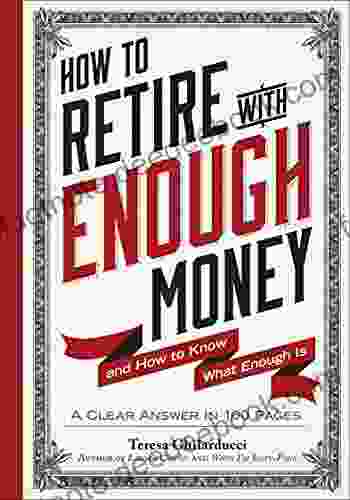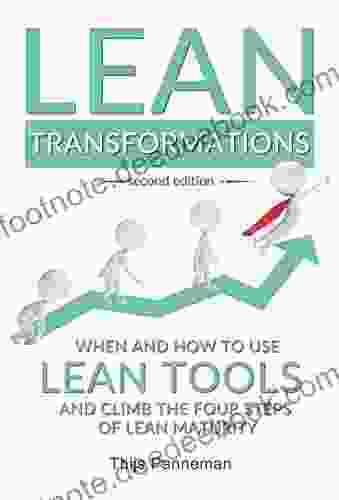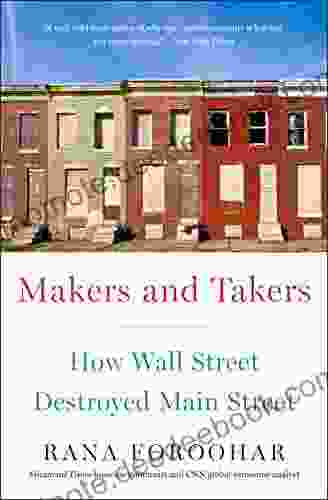How Wall Street Destroyed Main Street: A Chronicle of Greed, Recklessness, and the Demise of the American Dream


Once the bustling heart of American commerce, Main Street has fallen on hard times. Small businesses have shuttered their doors, leaving behind empty storefronts and a sense of despair. The culprit? Wall Street greed and recklessness, which led to the financial crisis of 2008 and its devastating aftermath for the real economy.
4.4 out of 5
| Language | : | English |
| File size | : | 3931 KB |
| Text-to-Speech | : | Enabled |
| Screen Reader | : | Supported |
| Enhanced typesetting | : | Enabled |
| X-Ray | : | Enabled |
| Word Wise | : | Enabled |
| Print length | : | 382 pages |
The seeds of the crisis were sown in the 1990s, when the financial industry underwent a period of rapid deregulation. This unleashed a wave of predatory lending practices, as banks and other financial institutions pushed subprime mortgages on borrowers who could ill afford them. The housing market boomed, but it was built on a foundation of sand.
In 2007, the housing bubble burst, triggering a chain reaction that brought the global financial system to the brink of collapse. Wall Street banks, which had been heavily invested in subprime mortgages, lost billions of dollars. The ensuing panic spread to other sectors of the economy, as businesses and consumers lost access to credit and confidence plummeted.
Main Street bore the brunt of the crisis. Small businesses, which are often more reliant on credit than large corporations, were particularly hard hit. Many were forced to close their doors, laying off workers and devastating local economies.
The financial crisis also had a profound impact on the American Dream. For generations, Americans have believed that hard work and perseverance can lead to financial success. But the crisis shattered that illusion, as many hardworking Americans lost their jobs, their homes, and their retirement savings.
In the wake of the crisis, there have been calls for reform of the financial industry. However, powerful Wall Street interests have been successful in blocking many of these efforts. As a result, the financial system remains largely unchanged, and the risk of another crisis looms large.
The destruction of Main Street by Wall Street is a tragedy for the American people. It has caused widespread economic hardship, undermined the American Dream, and shaken the public's faith in the financial system. It is a story of greed, recklessness, and the failure of government to protect its citizens from the excesses of the financial industry.
The Predatory Lending Practices that Fueled the Crisis
At the heart of the financial crisis was a wave of predatory lending practices that targeted low-income and minority borrowers. These practices included:
- Subprime mortgages: Subprime mortgages are loans made to borrowers with poor credit histories and low credit scores. These loans typically have higher interest rates and fees than traditional mortgages, and they are often adjustable, meaning that the interest rate can increase over time.
- No-documentation loans: No-documentation loans are loans that do not require borrowers to provide proof of income or assets. These loans are often made to borrowers with bad credit or who are self-employed.
- Liar loans: Liar loans are loans that are made to borrowers who lie about their income or assets. These loans are often made to borrowers who are trying to qualify for a loan that they would not otherwise be able to afford.
These predatory lending practices were made possible by the deregulation of the financial industry in the 1990s. This deregulation allowed banks and other financial institutions to take on more risk and to make loans to borrowers who they would have previously considered too risky. The result was a housing boom that was fueled by subprime mortgages and other risky lending practices.
The Housing Bubble and the Global Financial Crisis
The housing boom of the early 2000s was driven by a surge in subprime lending. As more and more people took out subprime mortgages, the prices of homes began to rise. This created a feedback loop, as rising home prices made it easier for borrowers to qualify for subprime mortgages. The housing bubble reached its peak in 2006, when the median home price in the United States reached $228,000.
In 2007, the housing bubble burst. As home prices began to fall, subprime borrowers began to default on their mortgages. This triggered a chain reaction that brought the global financial system to the brink of collapse. Wall Street banks, which had been heavily invested in subprime mortgages, lost billions of dollars. The ensuing panic spread to other sectors of the economy, as businesses and consumers lost access to credit and confidence plummeted.
The Impact of the Crisis on Main Street
Main Street bore the brunt of the financial crisis. Small businesses, which are often more reliant on credit than large corporations, were particularly hard hit. Many were forced to close their doors, laying off workers and devastating local economies.
The financial crisis also had a profound impact on the American Dream. For generations, Americans have believed that hard work and perseverance can lead to financial success. But the crisis shattered that illusion, as many hardworking Americans lost their jobs, their homes, and their retirement savings.
The Failure of Government to Protect Its Citizens
The financial crisis was a preventable disaster. Government regulators failed to rein in the predatory lending practices that fueled the housing bubble. They also failed to take steps to protect consumers from the risks of subprime mortgages and other risky financial products.
In the wake of the crisis, there have been calls for reform of the financial industry. However, powerful Wall Street interests have been successful in blocking many of these efforts. As a result, the financial system remains largely unchanged, and the risk of another crisis looms large.
The destruction of Main Street by Wall Street is a tragedy for the American people. It has caused widespread economic hardship, undermined the American Dream, and shaken the public's faith in the financial system. It is a story of greed, recklessness, and the failure of government to protect its citizens from the excesses of the financial industry.
4.4 out of 5
| Language | : | English |
| File size | : | 3931 KB |
| Text-to-Speech | : | Enabled |
| Screen Reader | : | Supported |
| Enhanced typesetting | : | Enabled |
| X-Ray | : | Enabled |
| Word Wise | : | Enabled |
| Print length | : | 382 pages |
Do you want to contribute by writing guest posts on this blog?
Please contact us and send us a resume of previous articles that you have written.
 Novel
Novel Chapter
Chapter Text
Text Library
Library Paperback
Paperback E-book
E-book Paragraph
Paragraph Sentence
Sentence Shelf
Shelf Bibliography
Bibliography Annotation
Annotation Footnote
Footnote Scroll
Scroll Codex
Codex Tome
Tome Bestseller
Bestseller Classics
Classics Autobiography
Autobiography Reference
Reference Encyclopedia
Encyclopedia Narrator
Narrator Character
Character Librarian
Librarian Catalog
Catalog Borrowing
Borrowing Archives
Archives Periodicals
Periodicals Lending
Lending Academic
Academic Journals
Journals Reading Room
Reading Room Rare Books
Rare Books Special Collections
Special Collections Literacy
Literacy Study Group
Study Group Thesis
Thesis Dissertation
Dissertation Awards
Awards Theory
Theory Textbooks
Textbooks Michael A Bailey
Michael A Bailey Andrea Bougiouklis
Andrea Bougiouklis David Greenspan
David Greenspan Amy King
Amy King Eduardo Galeano
Eduardo Galeano John Agresto
John Agresto Gerhard Adler
Gerhard Adler Chris Chaos
Chris Chaos Kate M Wachs
Kate M Wachs Karina Schaapman
Karina Schaapman Eric J Morones
Eric J Morones C R Jane
C R Jane Norman Ridley
Norman Ridley Springtide Research Institute
Springtide Research Institute Rebecca Behrens
Rebecca Behrens Michael Palmer
Michael Palmer Arne Nerjordet
Arne Nerjordet Jean Plaidy
Jean Plaidy Lillian Francken
Lillian Francken Lori Foster
Lori Foster
Light bulbAdvertise smarter! Our strategic ad space ensures maximum exposure. Reserve your spot today!

 Chadwick PowellChoosing the Right Monologues and Other Notables: A Comprehensive Guide for...
Chadwick PowellChoosing the Right Monologues and Other Notables: A Comprehensive Guide for... Jesse BellFollow ·13.4k
Jesse BellFollow ·13.4k Russell MitchellFollow ·11.4k
Russell MitchellFollow ·11.4k Joseph ConradFollow ·2.5k
Joseph ConradFollow ·2.5k Avery SimmonsFollow ·6.5k
Avery SimmonsFollow ·6.5k Langston HughesFollow ·4.5k
Langston HughesFollow ·4.5k Edgar Allan PoeFollow ·9.5k
Edgar Allan PoeFollow ·9.5k Ivan CoxFollow ·4.5k
Ivan CoxFollow ·4.5k Gustavo CoxFollow ·12.2k
Gustavo CoxFollow ·12.2k

 Allen Ginsberg
Allen GinsbergUnveiling the True Meaning of Enough: A Comprehensive...
: In the relentless pursuit of progress and...

 Clay Powell
Clay PowellHawker Hunter: The Jet Fighter that Shaped British...
Nestled in the halls of aviation...

 Alec Hayes
Alec HayesWhen and How to Use Lean Tools and Climb the Four Steps...
Lean is a management...

 Trevor Bell
Trevor BellVolume of Charlotte Mason Original Homeschooling: A...
Charlotte Mason's original...

 John Parker
John ParkerAscending Tristan da Cunha: A Comprehensive Guide to...
Prepare yourself for an extraordinary journey...
4.4 out of 5
| Language | : | English |
| File size | : | 3931 KB |
| Text-to-Speech | : | Enabled |
| Screen Reader | : | Supported |
| Enhanced typesetting | : | Enabled |
| X-Ray | : | Enabled |
| Word Wise | : | Enabled |
| Print length | : | 382 pages |












